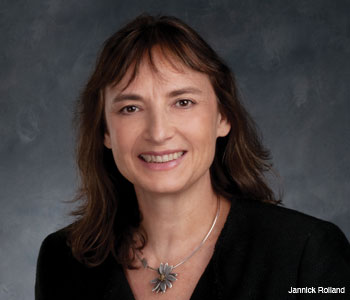Viewpoint
Reflecting on Career/Life Balance
As our lifestyles become more complex, all of us—whether men or women—must develop strategies to balance our career with our personal lives.
 Jannick Rolland
Jannick Rolland
For many of us, work provides a way to contribute to society, and it is often a significant component of our lives. Unfortunately, it has become increasingly difficult to keep up with the demands of a career in today’s highly competitive landscape. Working in academia, for example, requires one to have the skills of running a small business. Besides teaching and serving our universities and professional societies, we must seek funding and support our graduate students.
At the same time, many of us are also charged with the demands of raising a family or caring for elderly loved ones. As a single parent of two for part of my journey, I have had to forge my own path.
For me, the most challenging aspect of being a working parent is the travel required to be successful on the job. These days, the option to seek help from a family member is not always there. I chose early on to explore a different model for pursuing my career in science and raising happy and successful children. I wanted my children to develop as happy, creative, independent and successful human beings regardless of their less-than-optimal circumstances at that point in time.
Sacrificing my professional work to cook dinner and tuck them into bed every night was not realistic, and it was not the best way for me to meet my goals for them or me. I gave up on being “the perfect parent” and instead developed alternative ways of supporting my children—by raising them in an environment in which they could engage with a large pool of adults whom I trusted.
I believe that a family is happiest when each member of it is engaged in the activities that fulfill them the most. Both parents and children are most likely to thrive in an environment that is not only nurturing but stimulating.
Giving children the chance to interact with people from diverse cultures is of tremendous value. As a scientist, I work with young professionals who are often single or who have limited social lives, particularly if they are working in a country far from their original home. These young professionals are typically more than happy to engage outside the work environment.
My children built relationships with many of my colleagues and students, who became part of our family. I think that is why my older son chose to visit a Mosque with a Muslim graduate student at age 14 and why he decided to spend the summer in Seoul, South Korea, at 19 after having developed a strong friendship with one of my Korean students.
Another way I balanced my life and career was by making sure that I deeply connected with family in spite of our time-challenged lives away from my native home of France. In our case, this meant spending some summers abroad, with the goal of helping the children become bilingual. I thought that, by learning French, they could develop their family ties, better understand diversity and learn to adapt to change. In addition to summers abroad, I took a full-year sabbatical in France when they turned 9 and 11. I conducted science while also connecting with family.
While it was surely challenging for the children to spend a year away from home, it turned out to be a wonderful experience for them, and they are both thanking me for it today. They developed enduring friendships, and they are both fluent in French.
Balance isn’t about counting the hours spent at home vs. work; it is about the value we create when we are faced with challenges. What will leave a positive long-term imprint on our children’s minds and their attitudes towards life?
These days, balance comes a bit easier. In 2009, I remarried my dream partner, and I try to live every day to the fullest. Engineering and science are my passion, but I also like sharing dinners and conversing with friends from all walks of life. And I dearly love laughing with my children. This is my new balance.
Log in or become a member to view the full text of this article.
This article may be available for purchase via the search at Optica Publishing Group.
Optica Members get the full text of Optics & Photonics News, plus a variety of other member benefits.
